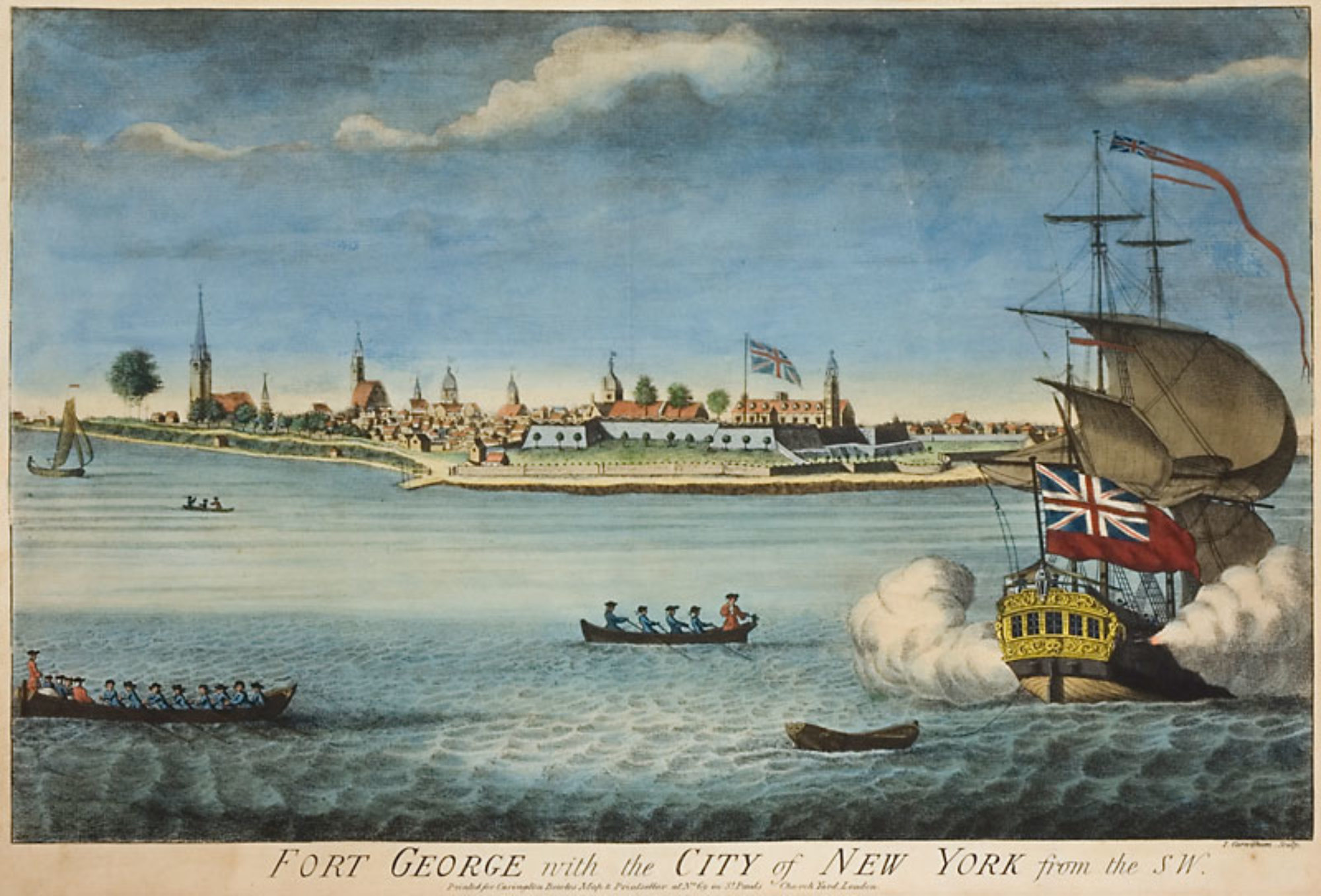
After Lord Dunmore’s Proclamation that freed “all indented Servants, Negroes, or others … that are able and willing to bear Arms” in November of 1775, the tide of runaway slaves increased to about 300 by the end of the month[1]. This group became the core of Dunmore’s Loyalist Ethiopian Regiment.
The Regiment had fought valiantly against the Virginia militia at Great Bridge on December 9, 1775, but were defeated brutally at another engagement that left most of the wounded and sick on Dunmore’s floating hospital off of Gwynne Island by early July 1776. An outbreak of smallpox had reduced the Regiment to about 300 survivors. With his forces “too few to stay off Virginia having lost so many by sickness,” the dispirited Dunmore gave the order to abandon Virginia and sailed for New York on August 7.
A spy reported to General Nathaniel Greene that approximately 800 blacks were under arms on Staten Island[2], which probably included units of the Ethiopian Regiment from Virginia that had arrived at Staten Island by late August 1776. They had arrived with about 1,000 Virginia Loyalists and their families after the regiment had participated in two battles with the rebels and survived the smallpox epidemic of 1776.

Some of the more notable slaves that escaped their bondage and offered their services to the British were a young man named Ralph, one of Patrick Henry’s slaves, and Harry, one of George Washington’s slaves who had escaped Mount Vernon by boat with two other of Washington’s slaves as the HMS Roebuck was accompanying Dunmore’s fleet while gathering water up the Potomac.

[1] Dunmore to Howe, November 30, 1775 in William Bell Clark, ed., Naval Documents of the American Revolution vol. 2 (Washington, 1967), 1210-11.
[2] Peter Force, American Archives, Fifth Series, 3 vols. (Washington, D.C., 1848-1853), 1: 486.
Other Sources:


You must be logged in to post a comment.